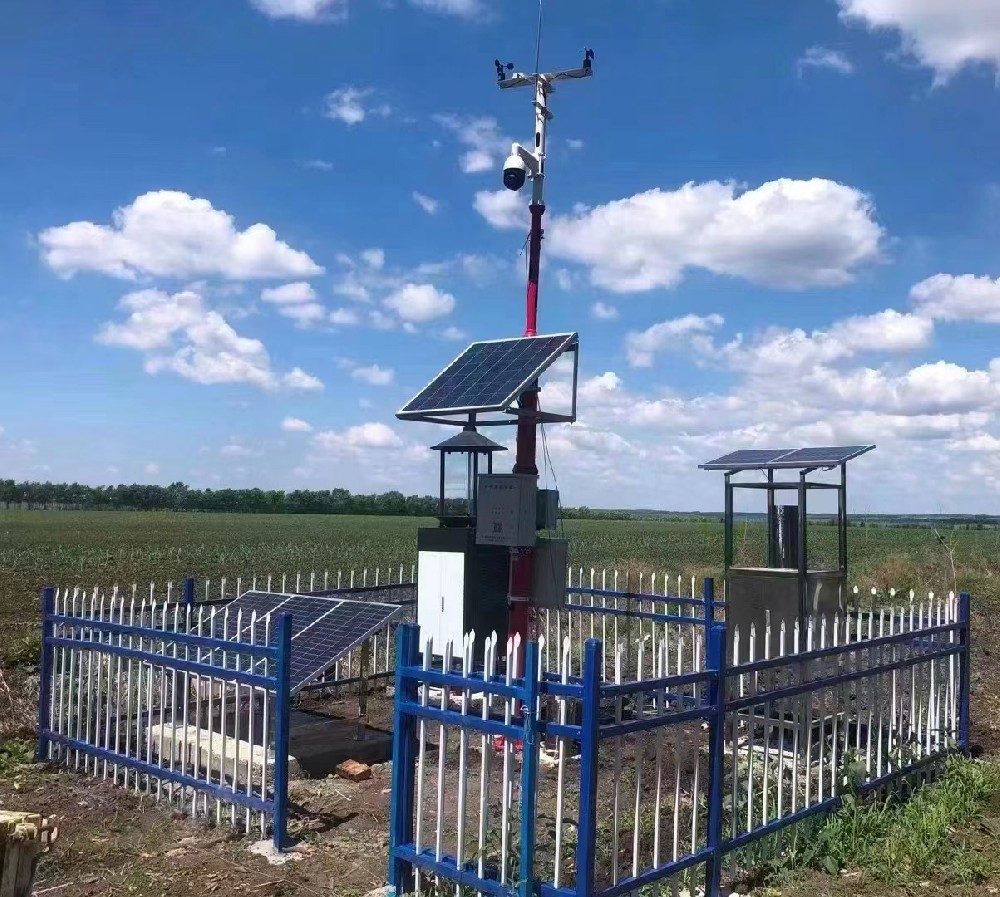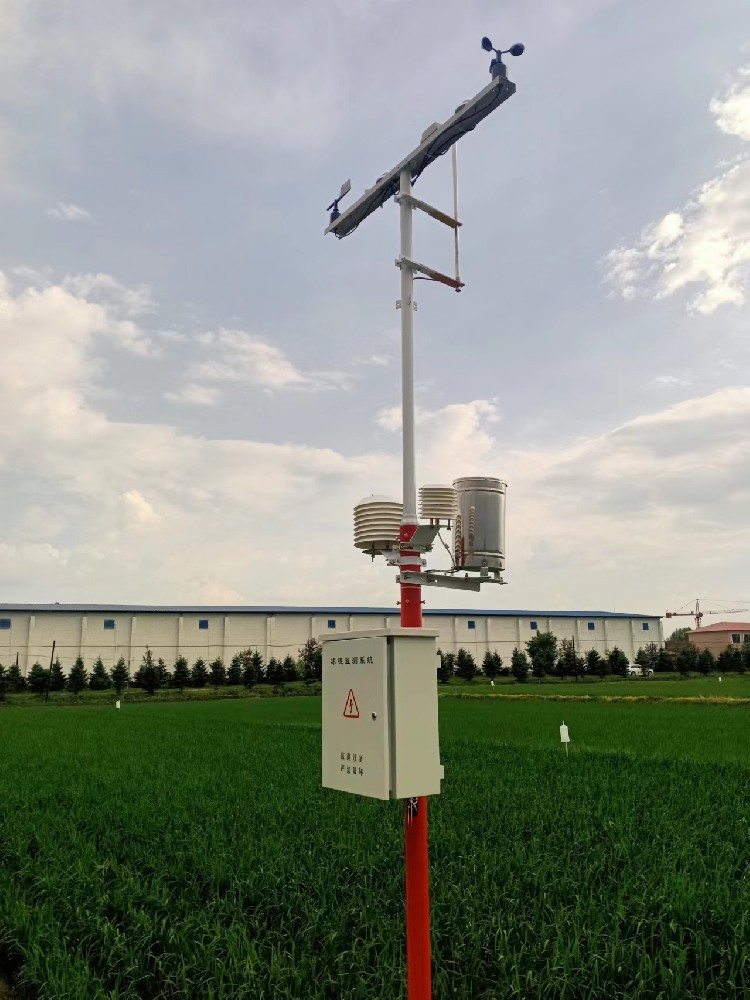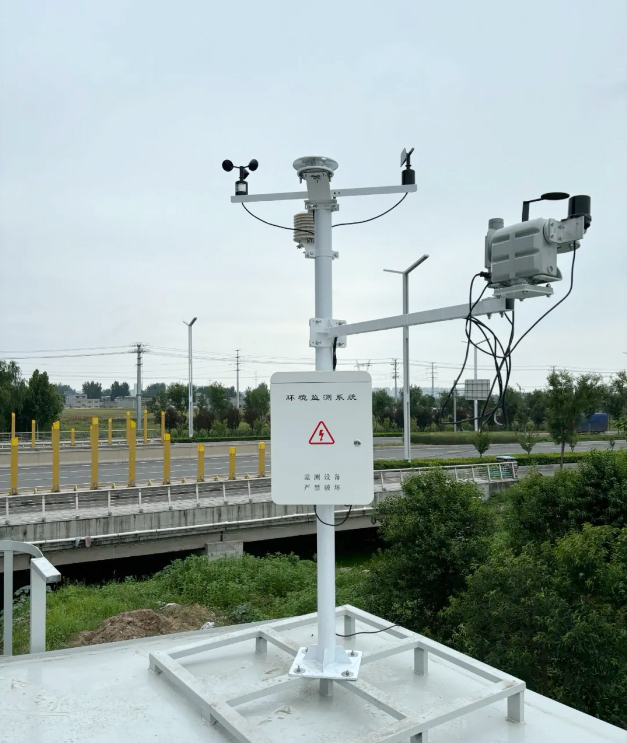

— Blogs —
—Products—
 Consumer hotline +8618073152920
Consumer hotline +8618073152920 WhatsApp:+8615367865107
Address:Room 102, District D, Houhu Industrial Park, Yuelu District, Changsha City, Hunan Province, China
Product knowledge
Time:2024-11-21 13:49:30 Popularity:1441
A multi-sensor weather station is a device that integrates multiple meteorological sensors to simultaneously measure and monitor various weather parameters, such as temperature, humidity, atmospheric pressure, wind speed, wind direction, rainfall, snow depth, visibility, solar radiation, and more. These stations typically consist of multiple sensors, data acquisition modules, data transmission equipment, and power systems, forming a complete weather monitoring system.
- Function: Measures the ambient temperature, one of the most basic meteorological parameters.
- Value: The accuracy and stability of temperature readings are crucial for the overall accuracy of meteorological data. Temperature plays a significant role in agricultural production, ecological monitoring, and other applications.
- Function: Measures the moisture content in the air, indicating the humidity level.
- Value: Humidity is an important factor influencing climate, plant growth, and human life. It is essential for weather forecasting, drought monitoring, and other fields.
- Function: Measures atmospheric pressure and provides information about pressure variations.
- Value: Atmospheric pressure changes are closely linked to the movement and evolution of weather systems. These readings are essential for weather prediction and climate research.
- Function: Measures the speed of the wind.
- Value: Wind speed is an important parameter in meteorology and climate research. It is vital for understanding atmospheric circulation, energy exchange, and has applications in wind power generation, aviation, and maritime navigation.
- Function: Measures the direction of the wind.
- Value: Wind direction changes can indicate the movement and intensity of weather systems. It is essential for weather forecasting and wind energy utilization.
- Function: Measures rainfall and provides data on precipitation levels.
- Value: Rainfall data is critical for weather forecasting, hydrological monitoring, and understanding water resource conditions, including flood prevention and disaster management.
- Function: Monitors solar radiation intensity.
- Value: Solar radiation is important for plant growth cycles and has applications in solar energy utilization.
- Function: Measures ultraviolet (UV) radiation intensity.
- Value: Helps monitor UV exposure, assisting in the prevention of skin cancer and other health issues.
- Function: Monitors the concentration of fine particulate matter in the air.
- Value: Critical for assessing air quality and protecting human health, as these particles can affect respiratory and cardiovascular systems.
- Function: Measures the moisture content in the soil.
- Value: Important for agricultural irrigation and ecological studies, helping optimize water usage and improve crop management.
- Function: Measures the rate of evaporation from water surfaces or soil.
- Value: Useful for studying hydrological cycles and monitoring drought conditions.
- Purpose: Provides comprehensive weather data for weather forecasting and climate research.
- Purpose: Offers precise meteorological data to guide agricultural practices such as irrigation, fertilization, and pest control.
- Purpose: Used in environmental monitoring stations to track air quality and other environmental parameters, supporting data-driven environmental protection measures.
- Purpose: Ensures meteorological support for the aviation industry, enhancing flight safety.
- Purpose: Monitors weather conditions on highways and at airports to support traffic control systems, improving safety and operational efficiency.
- Purpose: Provides data for urban planning and environmental management, aiding in optimizing energy utilization and improving city infrastructure.
- Purpose: Serves as a data resource for studies in meteorology, ecology, and related fields, and as an educational tool for research and teaching.

- Sensor Measurement: Various sensors continuously monitor environmental conditions and generate raw data.
- Data Recording: The raw data captured by sensors undergoes initial processing, such as analog-to-digital conversion, and is stored in local storage for further analysis.
- Wireless or Wired Transmission: Data is transmitted to central servers or cloud platforms through wireless methods (e.g., Wi-Fi, LTE, 5G, LoRa) or wired connections (e.g., RS485, RS232, broadband).
- Data Security: Secure transmission is ensured through encryption technologies (e.g., SSL/TLS) and reliable communication protocols.

- Database Storage: The received data is stored in a database that supports efficient management of large volumes of data and provides backup and recovery functionality.
- Data Archiving: Long-term storage data may be archived for future historical analysis.
- Data Cleaning: Missing, erroneous, or outlier data is identified and handled to improve data quality.
- Data Calibration: Sensors are calibrated regularly to correct system errors and drift.
- Data Smoothing and Noise Removal: Filters (e.g., moving average, Kalman filtering) are used to remove noise and outliers from the data.

- Statistical Analysis: Basic statistics, such as averages, maximum, and minimum values, are calculated to reveal trends in weather changes.
- Time Series Analysis: Analyzing the temporal variation of weather data to identify seasonal and cyclical patterns.
- Correlation Analysis: Exploring the relationships between different weather parameters, such as the correlation between temperature and humidity.
- Predictive Models: Machine learning algorithms are used to build weather prediction models, forecasting future weather changes.
- Data Visualization: Graphs, charts, and maps are used to display analysis results in an easily understandable manner.
- Report Generation: Detailed meteorological analysis reports are generated for researchers, government agencies, and businesses.
- Weather Forecasting and Research: Provides accurate meteorological data to improve weather prediction models and support climate change research.
- Environmental Monitoring: Assesses environmental quality and the impact of climate change, helping in the formulation of protection policies.
- Agricultural Management: Optimizes irrigation, fertilization, and pest control to enhance crop yield and quality.
- Urban Planning and Management: Evaluates city climate conditions to optimize infrastructure design and environmental management.
- Disaster Warning and Response: Identifies potential disaster risks and supports early warning systems to help relevant authorities take prompt action and reduce damage.

- Clean the sensors according to environmental conditions (e.g., pollution, humidity, dust). It is generally recommended to perform a comprehensive cleaning at least once a year, with more frequent cleaning in areas with severe pollution.
- Use soft brushes or clean, dry cloths to clean the sensors. Avoid using hard objects or chemical cleaners that could scratch or damage the sensors.
- Gently remove dust and dirt from these sensors. Avoid direct water washing to prevent internal damage.
- Check and replace filter papers as needed to maintain proper airflow.
- Clean the blades and axles, especially in coastal or dusty areas, where more frequent cleaning is required.
- Ensure the bearings rotate smoothly and lubricate if necessary, avoiding excessive lubrication.
- Clear out any debris such as dirt, leaves, or insects from the internal and external parts of the sensor.
- Ensure that the tipping bucket moves freely, and clean any drainage holes to prevent blockages.
- Check and clean the vent holes to ensure they are not blocked and replace the desiccant if it changes color.
- Wipe gently with a soft cloth to avoid using any chemical cleaners that may affect optical properties.
- During cleaning, be careful not to cause physical damage to sensors, especially avoiding water entering the internal parts.
- After cleaning, consider recalibrating sensors to ensure accuracy, especially if data abnormalities are detected.
- Document the cleaning dates and any issues found to track the condition and maintenance schedule of the equipment.
- Regularly check all sensor connections for looseness, ensure cables are not aging or damaged.
- Use monitoring software to track system status, including battery voltage and data collection.
- Protect the equipment from extreme weather conditions, such as strong winds, heavy rain, and extreme temperatures.
- Prevent sensors from being directly exposed to sunlight by using radiation shields with ventilation.
Through these meticulous maintenance steps, the accuracy of automatic weather station sensors can be effectively maintained, extending the service life of the equipment and ensuring the quality of the collected data. This is crucial for fields such as meteorological research, agricultural management, and environmental protection.
Summary:
Multi-sensor weather stations integrate various meteorological sensors for comprehensive and accurate monitoring of parameters such as temperature, humidity, pressure, wind speed, precipitation, visibility, and light intensity. They have widespread applications in meteorological observation, agriculture, and environmental monitoring, providing decision support through data processing and analysis. To ensure data quality, regular cleaning, calibration, and maintenance of sensors are necessary, along with protection of equipment from extreme weather conditions to extend service life and maintain accuracy.
Prev:Pyrheliometer Price
Related recommendations
Sensors & Weather Stations Catalog
Agriculture Sensors and Weather Stations Catalog-NiuBoL.pdf
Weather Stations Catalog-NiuBoL.pdf
Related products
 Combined air temperature and relative humidity sensor
Combined air temperature and relative humidity sensor Soil Moisture Temperature sensor for irrigation
Soil Moisture Temperature sensor for irrigation Soil pH sensor RS485 soil Testing instrument soil ph meter for agriculture
Soil pH sensor RS485 soil Testing instrument soil ph meter for agriculture Wind Speed sensor Output Modbus/RS485/Analog/0-5V/4-20mA
Wind Speed sensor Output Modbus/RS485/Analog/0-5V/4-20mA Tipping bucket rain gauge for weather monitoring auto rainfall sensor RS485/Outdoor/stainless steel
Tipping bucket rain gauge for weather monitoring auto rainfall sensor RS485/Outdoor/stainless steel Pyranometer Solar Radiation Sensor 4-20mA/RS485
Pyranometer Solar Radiation Sensor 4-20mA/RS485
Screenshot, WhatsApp to identify the QR code
WhatsApp number:+8615367865107
(Click on WhatsApp to copy and add friends)
